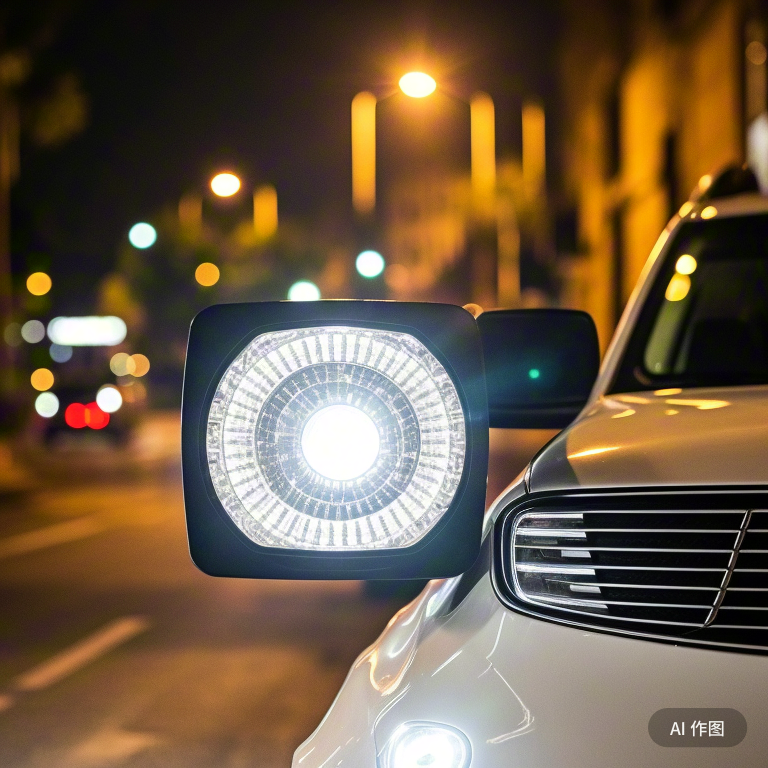-
Table of Contents
The Evolution Of LED Headlights In Modern Automotive Design
The integration of LED headlights into automotive design marks a transformative shift in both functionality and aesthetics, redefining how vehicles illuminate the road while shaping their visual identity. Initially regarded as a niche innovation, LED (light-emitting diode) technology has matured into a cornerstone of modern automotive engineering, blending energy efficiency with avant-garde design. This evolution reflects broader trends in vehicle development, where advances in electronics and material science converge to enhance performance, safety, and sustainability.
In the early 2000s, LEDs began appearing in automobiles, though their initial applications were limited to auxiliary functions such as brake lights and indicators due to luminosity and cost constraints. By the mid-2000s, however, pioneering automakers recognized their potential for headlights. Audi emerged as a trailblazer with the 2004 Audi A8 sedan, which featured LED daytime running lights, followed by the 2008 R8 sports car, the first production vehicle with full-LED headlights. Lexus soon joined this movement, debuting adaptive LED headlights in the 2006 LS 600h. These early systems faced challenges, including heat dissipation complexities and high production costs, but their advantages over halogen and high-intensity discharge (HID) lamps—such as lower energy consumption, longer lifespan, and faster response times—cemented their relevance.
As technology advanced, engineers overcame initial limitations through improved thermal management and manufacturing techniques. LEDs became more compact and powerful, enabling designers to reimagine headlight architecture. The shift from bulky, standardized units to slim, customizable clusters allowed automakers to integrate distinctive lighting signatures, such as BMW’s “Angel Eyes” or Mercedes-Benz’s “Multibeam” arrays, which reinforced brand identity. This design flexibility extended beyond aesthetics: precise light distribution improved visibility, reducing glare for oncoming drivers and enhancing safety—a critical factor in regulatory approvals worldwide.
The 2010s heralded further innovation with adaptive LED systems, which dynamically adjust beam patterns based on driving conditions. Matrix LED technology, introduced by Audi in 2013, uses individually controlled diodes to dim specific segments of the light beam, maintaining high visibility without blinding other road users. Such systems rely on cameras and sensors to detect vehicles, pedestrians, and road layouts, illustrating the synergy between lighting and autonomous driving technologies. By 2022, adaptive driving beam headlights received regulatory approval in the U.S., accelerating their adoption globally.
Today, LED headlights are synonymous with efficiency and sophistication. Their low power draw aligns with the rise of electric vehicles, where energy conservation is paramount. Moreover, automakers emphasize sustainability by using recyclable materials and reducing waste, as LEDs outlast traditional bulbs. Innovations like laser-assisted LEDs, which extend high-beam range, and organic LEDs (OLEDs), offering ultra-thin profiles, continue to push boundaries. Meanwhile, smart systems integrating vehicle-to-everything (V2X) communication promise to synchronize headlights with traffic infrastructure, optimizing illumination in real time.
Looking ahead, the trajectory of LED headlights will likely focus on enhancing interactivity and environmental integration. As autonomous vehicles evolve, lighting may serve communicative roles, signaling intentions to pedestrians or other drivers. Yet, the core legacy of LEDs remains clear: they have transcended their functional roots to become emblematic of automotive progress, merging cutting-edge engineering with artistry. In this journey from novelty to necessity, LED headlights illuminate not just roads but the path toward a safer, more sustainable automotive future.
Top Benefits Of LED Headlights For Night Driving Safety
Nighttime driving presents unique challenges, requiring drivers to navigate reduced visibility while staying alert to potential hazards. In this context, headlights play a crucial role in ensuring safety, serving as both a guide and a warning system for those on the road. Among advancements in automotive lighting, LED technology has emerged as a superior choice, offering numerous benefits that enhance safety after dark. These benefits range from improved illumination to energy efficiency, each contributing to a safer driving experience.
One of the most significant advantages of LED headlights is their exceptional brightness. Unlike traditional halogen bulbs, which rely on heated filaments, LEDs produce light through electroluminescence, delivering a more intense and focused output. This increased luminosity illuminates a broader stretch of road, allowing drivers to detect obstacles, pedestrians, or animals sooner, even in complete darkness. Moreover, the clarity of LED light reduces the likelihood of glare reflecting off road signs or wet surfaces, minimizing momentary blindness and helping drivers maintain better control.
Complementing their brightness is the optimal color temperature of LED headlights. Emitting a crisp, white light that closely resembles natural daylight, LEDs enhance contrast and depth perception compared to the yellowish hue of halogens. This improved color rendering makes it easier to distinguish objects and road markings, particularly in poorly lit or unpredictable environments. By reducing eye strain and fatigue associated with prolonged focus in dim conditions, LEDs help drivers remain alert and responsive during long nighttime journeys.
Another critical benefit lies in the precision of LED beam patterns. Advanced optics and engineering allow these headlights to distribute light more evenly and accurately, ensuring illumination is concentrated on the road rather than scattering into oncoming traffic. This focused output enhances visibility for the driver while reducing glare for others, aligning with stringent roadway safety standards. As a result, LED headlights contribute to a safer shared driving environment, where visibility is maximized without compromising the comfort of fellow motorists.
In addition to performance advantages, LEDs excel in energy efficiency and durability. Consuming significantly less power than halogen or high-intensity discharge (HID) bulbs, they place minimal strain on a vehicle’s electrical system, ensuring reliable operation even during extended use. Their solid-state construction, devoid of fragile filaments or glass components, makes LEDs inherently resistant to vibrations and impacts. This durability translates to a longer lifespan—often exceeding 20,000 hours—reducing the need for frequent replacements and ensuring consistent performance over time. For drivers, this reliability means fewer unexpected failures, a critical factor in maintaining
Choosing The Right LED Headlights For Different Weather Conditions
When considering the selection of LED headlights for varying weather conditions, it is essential to prioritize features that enhance visibility while ensuring safety and compliance. LED headlights offer significant advantages over traditional halogen or HID lights, including superior energy efficiency, longer lifespan, and brighter illumination. However, their effectiveness in diverse climates depends on careful consideration of color temperature, beam pattern, durability, and




